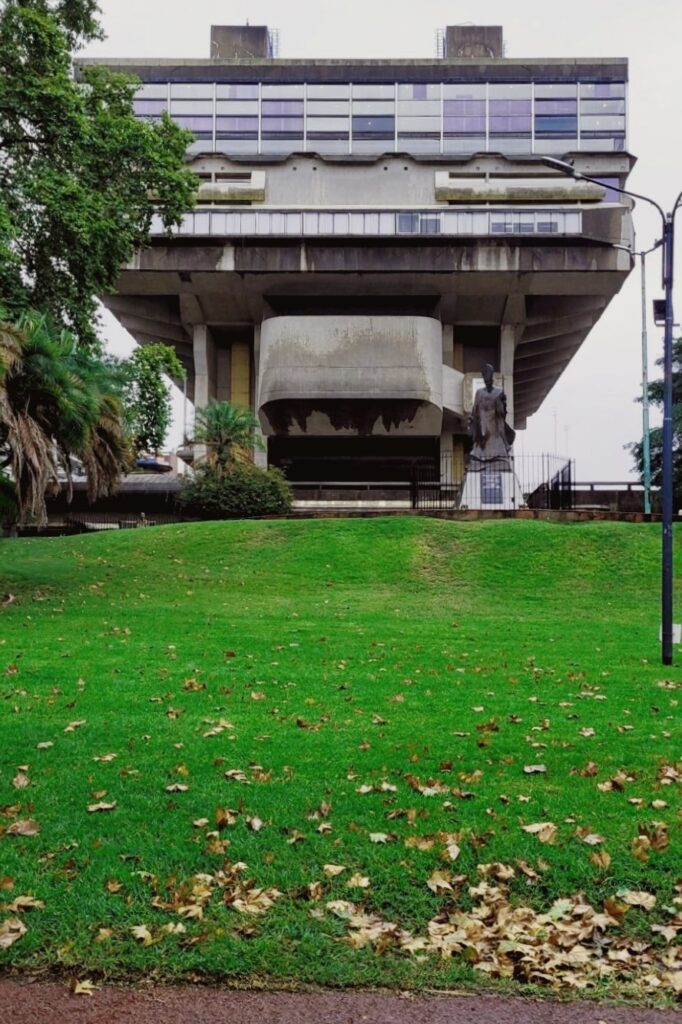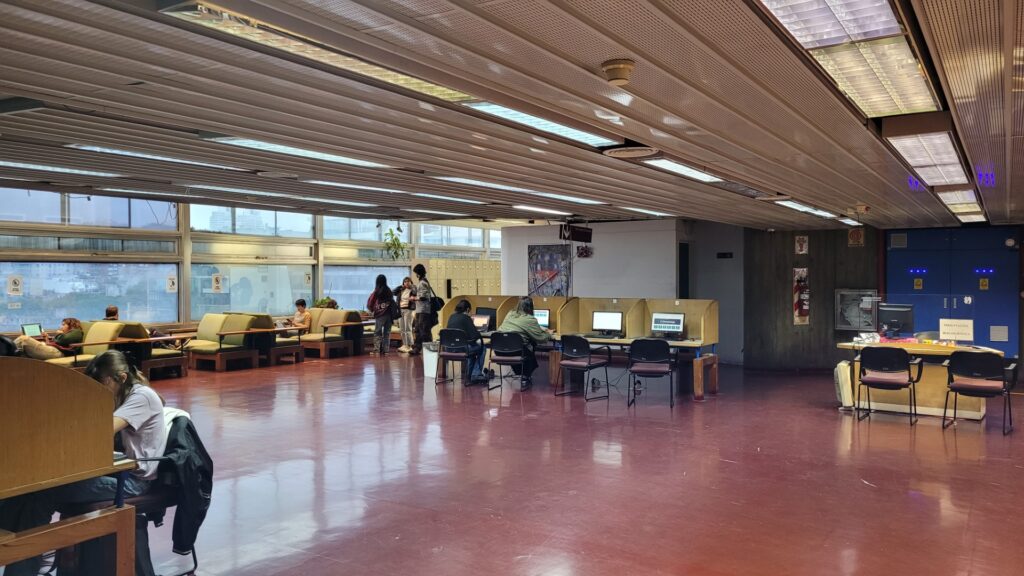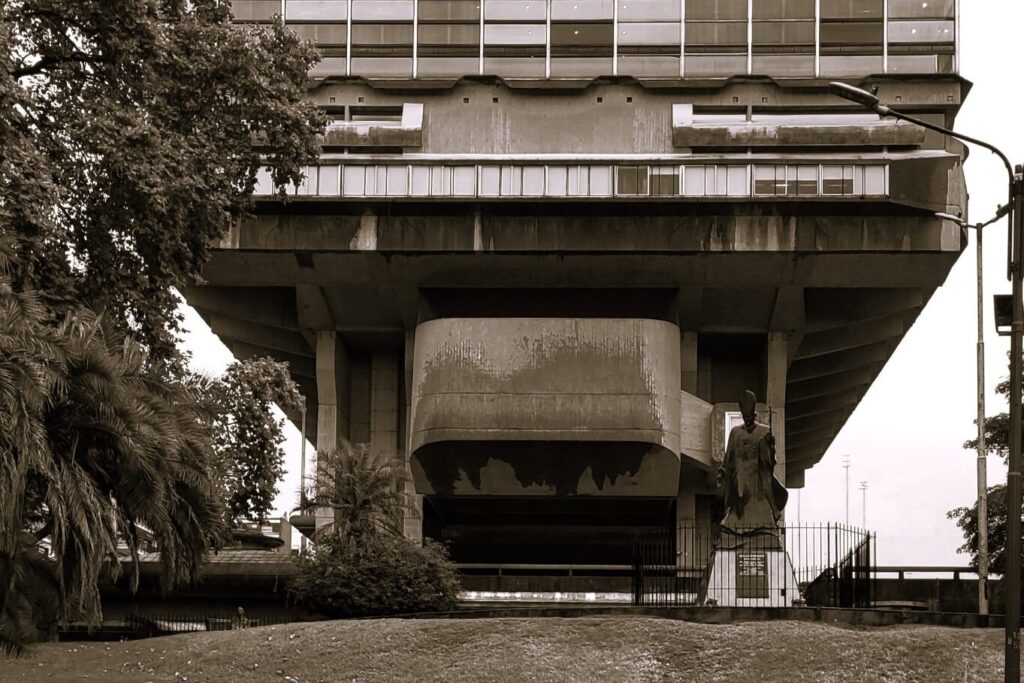Biblioteca Nacional Mariano Moreno, Buenos Aires, Argentina
- Mariano Moreno was an ideologist of the May Revolution in 1810.
- The Architects: Clorindo Testa, Francisco Bullrich, Alicia Cazzaniga.
- The brutalist architecture style became popular in the 1960s and 1970s, and is characterized by heavy use of concrete and exposed structural elements.
When something is good, we tend to elaborate on why we like it, but when it’s bad, it’s usually just bad. Most likely, we will engage in a quantitative analysis of the badness, probably because we want to learn from the mistakes that led to a project’s failure, so as not to repeat them.
However, there are times when something is so outrageously bad that there’s little to learn from it. In such cases, all we can do is marvel at its pure awfulness. The Biblioteca Nacional in Buenos Aires is one of these times.

The largest library in Argentina domates a flat rectangular plot in the upscale neighborhood of Recoleta with a menacing architectural statement.
The main reading area is raised on a pedestal above the esplanade. To reach it, you need to take a staircase hidden within one of the blind concrete cores; the elevator has seen better days. On your way up, you’ll pass by the restricted administrative area on the second floor, and the media library, treasure room, and exhibition hall on the third floor. Adding to the peculiarities, there’s a concrete balcony suspended from an unspecified floor.
When I first got in contact with this monument, a mix of emotions swept over me as I moved from the exterior to its inner chambers. I was overtaken by the Kafkaesque spatial confusion, the clunky interior layout, the flagrant lack of modern amenities, the bleak absence of books, the mismatched dirty windows offering hazy city views, the scattered plastic containers collecting rainwater from a leaking roof, and the eerie sound of the wind rustling loose elements in some hidden confines of the ceiling.


It’s hard to believe that this building was the winning proposal of a competition. However, in 1961, the time of its design, the popular approach was to turn conventions on their head. It was a time of disruption and bold experimentation, one that pushed the limits of both concrete and taste.
This innovative spirit was evident in the decision to place the main reading area high above ground and to bury the books into deposits in sub-basement levels, as a blatant display of the Freudian psychological concepts of “separation between the intellectual task (reading) and the memory function (books).”

It was a new kind of programmatic model. The one that literally inverse the traditional approach to designing libraries, where bookshelves are placed against the walls enclosing the reading space. By raising the main floor way high, it provided uninterrupted views to the city, a way to connect the readers to the outside world. PLus, the reduced footprint allowed plenty of room below for leisure activities to take place under the looming concrete shadow.
The construction didn’t wrap up until the early 1990s. Fast forward to 2024, and wrinkles already etch the concrete skin, as if it aged too quickly from too much sun exposure. Instead of exuding optimism, there’s a sinister tone to its appearance, almost too loud, something out of a post-apocalyptic steampunk fantasy novel.
A better way to approach intellectual tasks emerged later, when books regained their central importance as objects of worship in the shrine of culture and education. Notable examples of this include the Seattle Central Library, and closer to home, the Bibliothèque et Archives nationales du Québec, both buildings established in 2004. Inside, books are arranged in a compact space with low ceilings, carpeted floors, and controlled lighting. The “inhabitable exterior wall” frames the reading area, offering a view to both the city and the book collection. I think we have found our winning concept for now, until the next revolution.
While I’m based in Buenos Aires during a remote work trip, I don’t know if I’ll ever revisit the library, but I’m glad it’s there.


Learn more about concrete’s soft side here
